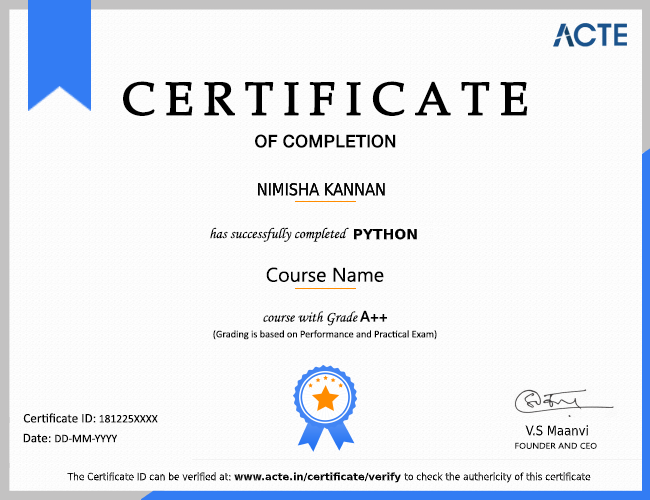The PSPOTM I certification shows that you know the Scrum framework well and how to use it to optimize the value of a product. The certification also confirms your commitment to continuing professional growth and a high degree of commitment to Scrum. Professional Scrum Product Owner (PSPO) Course focusing on all of the fields, which teaches students how the value of products and systems can be maximized. For product owners, agile product managers, and anybody responsible for product success in this market, PSPO is a cutting-edge course. Through lectures and team exercises, students build and strengthen their expertise of becoming a producer. Become a product owner who drives your team and ensures that this PSPO certification training success is achieved. Our training will provide you with new employment prospects in several industries. The Scrum Product Owner Professional course provides the basic knowledge necessary to work with Scrum.
Additional Info
About Professional Scrum Product Owner Training :
With the world moving at a faster pace, why would you be a tortoise? With so many online training options, you might feel overwhelmed to choose the right one. However, if we are here then worry does not stay near. We have brought to Scrum Product Owner Training which helps you to be ahead of your time and your product to be the best!
Why You Choose Scrum?
Before diving into the core of the topic, let’s stroll around at the surface and learn what ‘Scrum’ is. Scrum is a unique framework that is built to keep your creativity intact while it addresses the complex problems that come your way during product building. Being a product owner can be a task, however, along with Scrum you can easily ace your role. A product backlog is crucial when it comes to building something that your customers will like. Here is where scrum eases your shoulders and takes the burden on itself.
Why You Should Choose it?
1. Convenient Product Backlog :
One could lose in tabs while building a product,, if they do not have software that helps to manage them well. Scrum helps you t manage your goals and accelerates your hard work in the right direction. You could spend hours doing a task but with scrum, the job can reduce down to minutes.
2. Be a Sprinter :
Sprinting in simple terms means acquiring more space in long strides, that is what you can do on scrum as well. You don’t have to run a marathon to complete the tasks that lie ahead of you. You can simply sprint, take a break, and sprint again. Scrum helps you to categorize tasks into shorter cycles, these shorter cycles increase work efficiency and help to complete more tasks in a day.
3. Unblurred Lens :
If you see it well, then you can do it well. This simple principle applies everywhere and especially in scrum. You need not write lengthy to-do lists or draw cutesy icons beside them. All you have to do is, visualize your tasks and prioritize them. This simple step eases out that you might even have an extra ‘me-time’ at the end of the day.
4. Befriend the Clock :
Productivity is like rains, sometimes it drizzles over you and sometimes there is a cloudburst. However, we must aim to create consistency when it comes to these inconsistent productivity showers. Time your sprints, revise the previous sprint before running on the next one. Run your sprint cycles along with your stakeholders, take breaks and run again. At the end of the day, you must feel happy about completing tasks without exhausting yourself.
Once you have all the clarity you needed about why you should choose scrum, we shall move on to the roles and responsibilities in it. Scrum is not about one person, it is about a collective effort. The term scrum itself is picked from rugby to emphasize the importance of teams and how they can help to win any game!
Roles and Responsibilities in Scrum :
It is not a ‘one-man army’ when it comes to building a product. There is an entire team of directors and developers that put their efforts into the product. Below is the list of roles where you might fit according to your skillset and aspiration. In a world full of chaos, scrum teams help you to silence the chaos around you.
- The Developer :
Someone who develops is a developer. Gone are the days when a developer was viewed as someone who is nerdy and it’s always buried in their laptops writing huge codes. Anyone who does anything using their skill to develop the product sits in the development team. These teams are structures on the basis of the work that they have to do. If the team is building an insurance app, then the people in the team must have the required skills for it. If the team is working on some gaming app, then the team must have people who about various games and are enthusiastic about it.
- The Director :
The product owner in this frame plays a crucial role. One could have an agile team but the product owner has no idea where to take it, then the team is as good as bad. The product owner is the director of the project, s/he should know where to take the team and product. It is the relationship between the developer and director that makes the product one of the best things a customer must have seen. The product owner must know to manage the product backlog, manage the release of sprints and stakeholders.
- The Master :
The scrum master is the fevicol of the team, s/he glues everyone together. S/he has to be self-organized and transparent. S/he is responsible to promote a thriving environment within the team and accelerate their work. The person should be an all arounder and must protect the team. Someone who is empiric and can resolve the problems that arise while product making.
Once we know the roles and responsibilities of the scrum product owners, we must also illuminate the skills that are required by the product owner, these skills are one of the most basic skills that you should have for every title.
Skills Required :
Smooth Communication :
Communication skills have become the oxygen of the corporate world, without communication skills no job can be done. The product owner must be able to communicate well with the development team, scrum master, and the stakeholders. The fluency of his/her communication decides the betterment of the product.
Analytical Mind :
A product owner must be able to criticize success and digest it too. It is simple math, you make something, criticize it and end up making it even better. Analyzing every aspect of the product with an eagle eye is crucial for the product to bloom well. In fact, analysis of any project could be synonymous with oxygen as well.
Prioritizing and De-prioritizing :
The product owner can not stir a wave of tasks only to create a tsunami later. You must know which task has to be done first and which task can wait. Similarly, the product owner is someone who is giving the right direction, hence he has to be the gatekeeper when it comes to ideas. The developing team surfs towards the creative side of the spectrum and hence they might have a lot of suggestions, however, the product owner must know when to accept them or reject them to get what s/he wants.
Focus :
If the product owner himself/herself is out of focus then the chances of creating the best products shrink. There has to be a focus on what is wanted and how it is to be created. The product owner must have a high level of focus and they must know how to keep the entire team focused as well.
After all this information, the framework of the tool is crucial to reap the best results that are desired.
Framework :
The scrum model is a unique model that promotes work through sprints. These sprints help the developers to prioritize the task and finish them within the deadlines. Scrum sprints are timeboxed in short durations, that is at a stretch of two weeks or a month. Once these sprints are created, it becomes easy for the scrum user to revise and advance the backlog. Once the sprints are taken care of, it becomes a cakewalk and other tasks fall in place pretty well.
After learning a certain something, you should know how to integrate it into your work. Therefore, we must now see the integration module of the scrum. We shall see a few ways of the integration module that branches out through scrum.
- Prototyping Everything :
Prototyping is like a hypothesis, you know what can reap hence you sow better. To overcome these obstacles, devise a proof-of-concept (PoC) strategy. Schedule these prototyping sessions early in the project because they may have an impact on overall planning (e.g., additional development necessary) and budgeting (e.g. purchase of a third-party tool or plug-in). Perform them in a sandbox environment (for example, the cloud) to avoid wasting time on administrative procedures and overhead.
- Defining ‘Ready’ :
This is a critical feature of large-scale integration initiatives. You don't want your development team to be constantly stymied by ambiguous dependencies, but you also don't want to postpone development indefinitely, as this poses a danger. It's a challenging balancing act that necessitates a pragmatic approach and some flexibility. Thus, defining ready becomes a crucial integration module in the scrum.
- Self-organization to the Rescue :
When estimating the effort for backlog items, the development team must be involved. As a result, you'll have a more accurate picture of the expected development progress and the team will be more driven to reach their targets. Second, encouraging the team to become self-organized is highly recommended. This means they choose how to organize themselves in order to get the most out of the team and create high-quality results.
In a world full of skills and experiences, certification is important too. Certifications create self-trust and faith in your team. The Scrum Product Owner training helps you to get the right certification and garners your skill for the better.
Certifications :
On agile teams, product owners have a unique and demanding role. A product owner chooses the next project for the team to work on in order to provide additional value to the customer. You'll study the structure, concepts, and values that make scrum work, as well as the important skills and tools you'll need to be successful, in a Certified Scrum Product Owner (CSPO®) class. You'll learn how to balance the needs of multiple stakeholders. This certification will not only help you be the best at what you do but will also help you to deliver the best!
If you have come this far, then you must be eager to see what all the above information benefits you. The benefits of scrum, in general, are quite good, and thus learning it can help you be better at delivering high caliber performance.
Benefits :
The following are some of the advantages of CSPO certification :
- Adopting Agile techniques broadens the scope of your employment prospects across all industry sectors.
- Demonstrate and apply fundamental Scrum concepts.
- Learn about the foundations of Scrum and the scope of the position.
- Work with Scrum masters who are dedicated to continuous improvement.
- Other than these basic benefits, there are some financial benefits as well. These financial benefits include discounts and offers on various websites that give the certification of the scrum. They also help in directing career opportunities your way.
- With all this certification and knowledge, one must have the chunks of money flowing in. Monetary benefits not only help you with your expenses but also give you a sense of self-esteem and appreciation.
Salary Perspectives :
The Pay Scale of the product owner is as follows, however, this payscale can always differ according to the work that comes your way. The Product owner can make approximately 2 million a year if they use their skills correctly. One needs to be well-versed with the software, their skills, how the software can amplify their skills and the amalgamation of both will take them to a better place and the customer experience to the heights.































